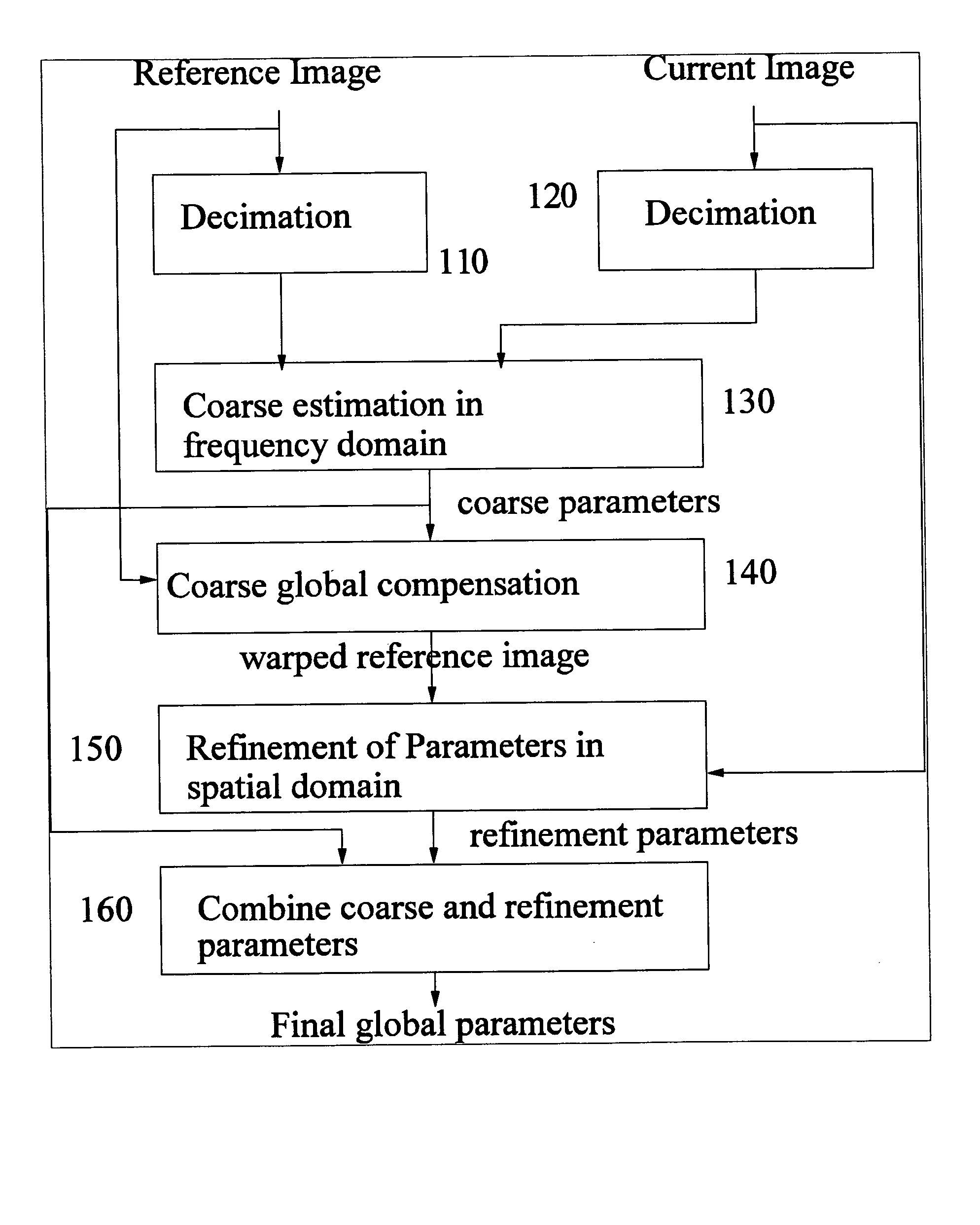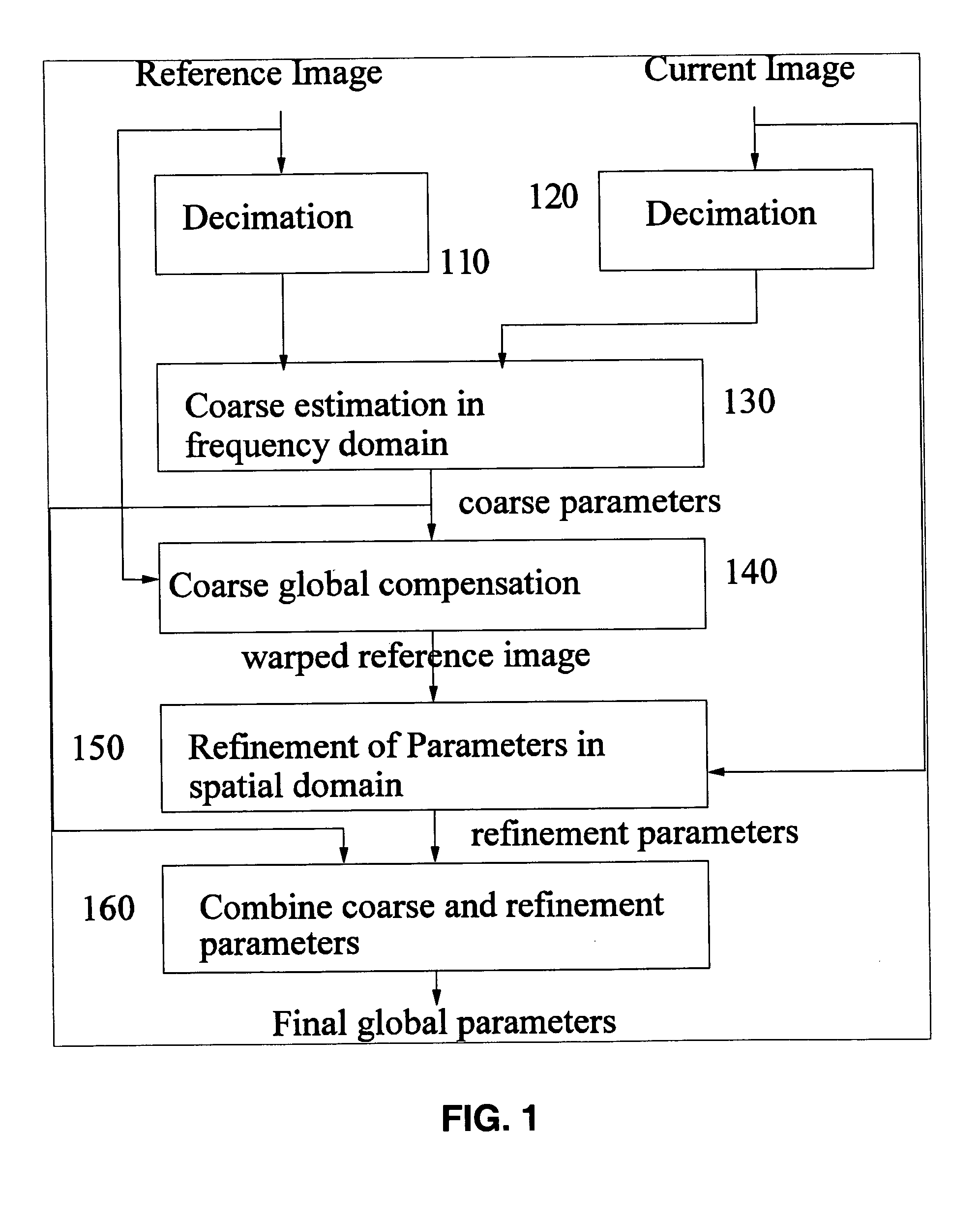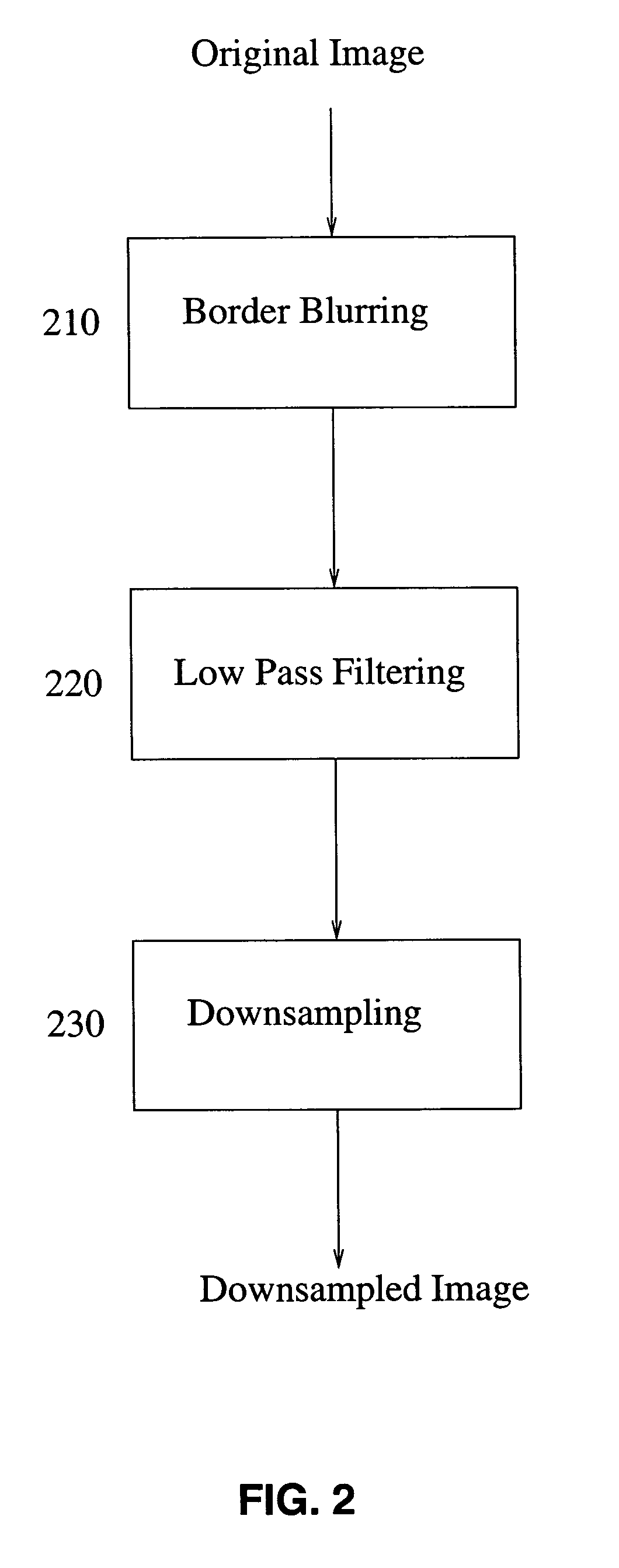Global motion estimation image coding and processing
a global motion estimation and image technology, applied in the field of image and video coding, can solve the problems of inherently computationally intensive and slow techniques, difficult digital communication and storage of image data, and large amount of data, and achieve the effect of fast and robust global motion estimation
- Summary
- Abstract
- Description
- Claims
- Application Information
AI Technical Summary
Benefits of technology
Problems solved by technology
Method used
Image
Examples
Embodiment Construction
[0022]The invention is directed to methods, devices and systems for encoding and / or processing image, e.g. video, data. Embodiments of the invention provide a fast and robust global motion estimation algorithm based on two-stage coarse-to-fine refinement strategy, which is capable of measuring large motions. Image, as used herein, refers either to an entire image or a portion of an image, such as a block or sub-block, or a selected portion of an image. Image, as used herein, could also be used to describe the entire image or its decimated version or processed version. The term “image” encompasses both entire images and any image portions, and should be so interpreted in reading the specification and the claims. A reference image and current image are related by the relationship X′=AX+B, where X′ is two-dimensional coordinate of a pixel in current image and is related to that in the reference image, X by a matrix A multiplication plus a translational vector B.
[0023]In embodiments of ...
PUM
 Login to View More
Login to View More Abstract
Description
Claims
Application Information
 Login to View More
Login to View More - R&D
- Intellectual Property
- Life Sciences
- Materials
- Tech Scout
- Unparalleled Data Quality
- Higher Quality Content
- 60% Fewer Hallucinations
Browse by: Latest US Patents, China's latest patents, Technical Efficacy Thesaurus, Application Domain, Technology Topic, Popular Technical Reports.
© 2025 PatSnap. All rights reserved.Legal|Privacy policy|Modern Slavery Act Transparency Statement|Sitemap|About US| Contact US: help@patsnap.com



